Beneficial insects are insects that are beneficial to humans or agriculture. They can help control populations of other pests and can also play an important role in crop pollination. Common beneficial insects include bees, silkworms, ladybugs, mantises, earthworms, dung beetles, hoverflies, parasitic wasps, lacewings, dragonflies, etc. These insects are not only part of ecosystems, but are also key components of many ecosystem functions and services. They are of great significance to the maintenance of ecological balance and the development of agricultural production. In addition to these common beneficial insects, you are also welcome to add additional discussions in the comment area.
1. Bee
Bees are social insects that usually live in a colony consisting of a queen bee, worker bees, and drone bees. They feed on pollen and nectar and are also important pollinators. Bees play a vital role in agricultural production as they help pollinate crops and promote crop growth and reproduction. In addition, bees can also produce products such as honey and beeswax, which also make huge contributions to human health and economic development.
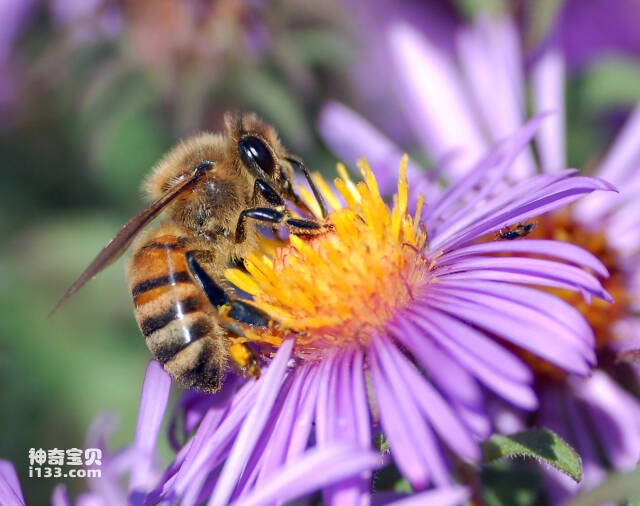
It is worth noting that the number of bees worldwide has declined sharply in recent years, which may be due to various factors such as climate change, deterioration of the ecological environment, and excessive use of pesticides. Therefore, protecting and maintaining bee populations is of great significance to maintaining ecological balance and agricultural development.
2. Silkworm
Silkworm is an economically important insect whose larvae can spin silk and form cocoons, which are used to produce silk. Silkworms belong to the family Seridae, and are mostly white or light yellow small insects with a slightly egg-shaped body. There are many types of silkworms, mainly divided into two categories: domestic silkworms and wild silkworms. Bombyx silkworms are currently the most widely cultivated species. They have strong adaptability, fast growth and high cocoon production. Wild silkworms live in the natural environment, and their cocoons are hard and have high commercial value.
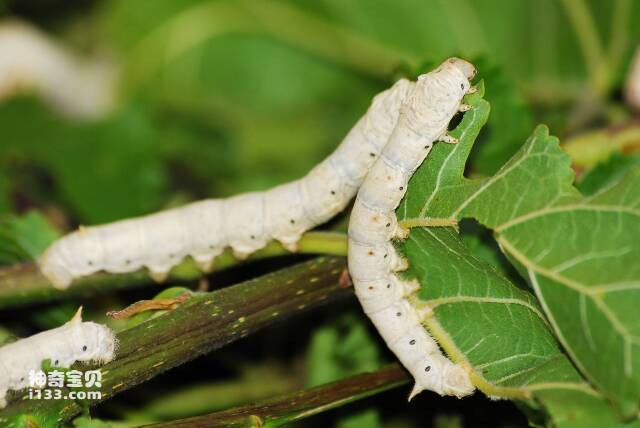
The life cycle of silkworms is short, only about a month, but during this short period of time, silkworms will continue to eat mulberry leaves, grow into larvae of varying sizes, and then begin to spin silk and form cocoons. These cocoons are processed into threads, which are further produced into textiles such as silk. In addition to economic value, silkworms also make certain contributions to the ecosystem. Mulberry trees are a food source for silkworms. They can also prevent soil erosion and improve land quality and ecological environment.
3. Seven-star ladybug
The seven-spotted ladybug is a common beneficial insect belonging to the family Coccinellidae of the order Coleoptera. They have a red or orange background with black spots and a dome-shaped back, making them very cute. Seven-spotted ladybugs feed on aphids and also eat other small insects and molluscs. Therefore, Coccinella septempunctata is widely regarded as one of the natural biological control agents and has important value for agricultural production.
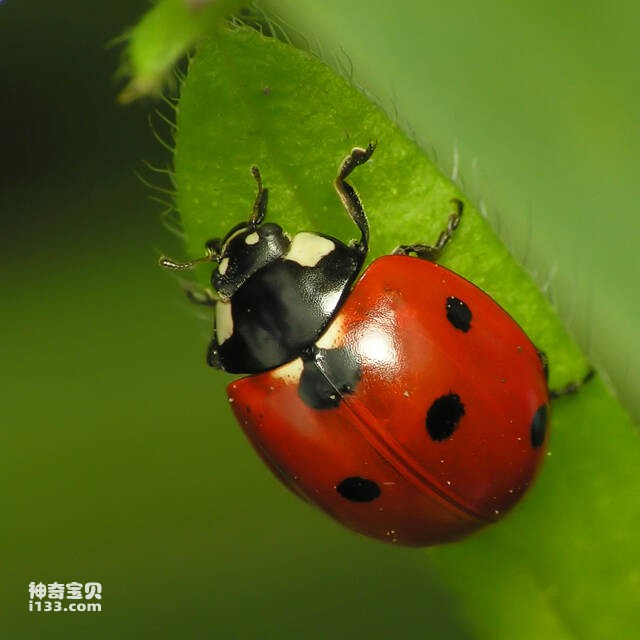
Seven-spotted ladybugs are usually active in summer and autumn, and the lifespan of adults is about 2-3 months. They search for food and shelter in areas such as meadows, flower fields, woods and orchards, and also lay eggs. In short, Coccinella septempunctata is a very popular beneficial insect. It can not only control pests, but also serve as a natural tool for biological control. It plays an important role in improving the quality of agricultural production and protecting the natural ecological balance.
4. Mantis
The praying mantis is a common carnivorous insect belonging to the family Mantidae. Their bodies are slender and flat, usually in green, brown or yellow colors, with two pairs of front legs and hind legs, with sharp spines between the front legs and hind legs. Praying mantises mainly eat other insects, such as locusts, mosquitoes, flies, dragonflies, etc. Therefore, they are widely considered to be one of the natural enemies in nature and play an important ecological role. At the same time, the mantis molts as it grows, becoming stronger and healthier after each molt.
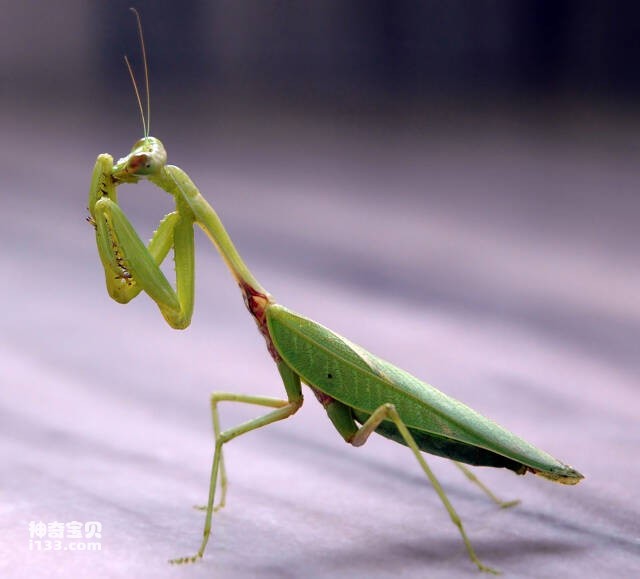
Praying mantises are also very interesting in the process of sexual intercourse. Male mantises are usually eaten by female mantises after sexual intercourse. This is because female mantises need to consume a lot of nutrients to hatch eggs and reproduce offspring. In short, the praying mantis is a magical and beautiful insect that not only plays an important ecological role in nature, but is also one of people's favorite ornamental insects.
5. Earthworms
Earthworms are common invertebrates belonging to the phylum Annelida, class Oligochaeta, and order Vermicomida. Their bodies are long and round, with no head or tail. They usually live in the soil, feed on organic matter in the soil, and continuously dig and improve the land during their lives. Earthworms have a very significant effect on improving the land. They reduce soil density by excavating the soil and digesting organic matter, improving soil ventilation and water retention, increasing soil fertility, and promoting the growth and reproduction of microorganisms to provide a better growing environment for other plants.
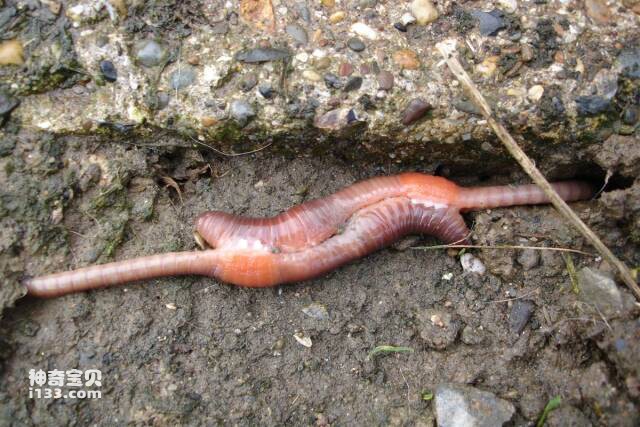
In addition to improving the land, earthworms are also a major food source for some birds and reptiles. At the same time, earthworms are also widely used in recreational activities such as fishing. Due to their slender bodies and soft texture, earthworms have become one of the most popular natural baits. In short, although earthworms look inconspicuous, they play an important role in ecosystems and agricultural production, and are one of the indispensable links on the earth.
6. Dung beetle
The dung beetle is a common insect that lives in tropical and temperate regions around the world. The dung beetle is brown or black in color, looks like a bean, and is about 1-2 cm long. Dung beetles mainly feed on excrement, including feces and decaying plant matter. They help improve soil quality and promote plant growth by eating this organic material, converting it into fertilizer that is more easily absorbed by plants, and breaking it down into small particles. Therefore, dung beetles play an important environmental role in nature.
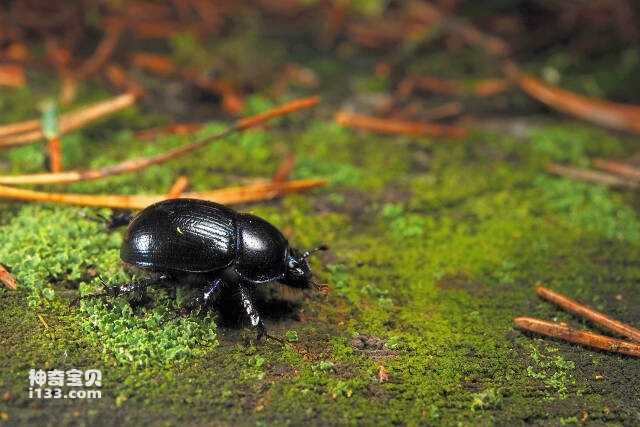
In addition, dung beetles are an important food source and are widely used in the production of human food and animal feed. Dung beetles are rich in protein and nutrients and can be used as an efficient and sustainable food source, which is of certain significance in alleviating global food security problems. In short, although the dung beetle looks inconspicuous, it plays an important role in nature and human society.
7. Hoverflies
Hoverflies are common parasitic insects belonging to the family Diptera, family Hyrphidae. They usually feed on the bodily fluids of plant aphids and lay and hatch their eggs on their host plants. Hoverflies are of great significance to agriculture because they can help control plant pests such as aphids and alleviate conflicts between pests and crops. In addition, hoverflies are also widely used in biological control as natural pesticides that do not pollute the environment like chemical pesticides.
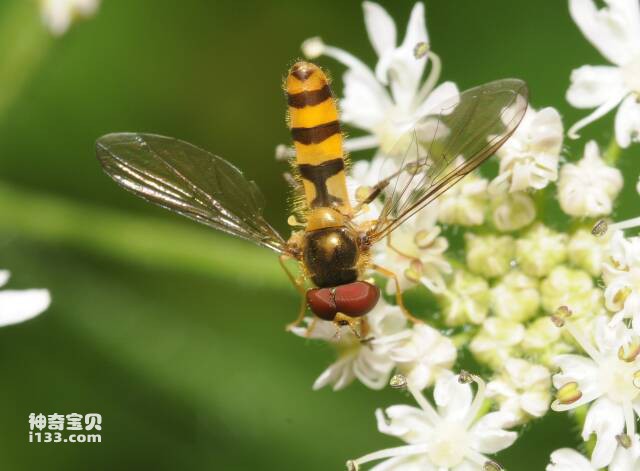
Hoverflies are usually active from spring to summer, and the life cycle of adults usually does not exceed two weeks. During this time, they will continue to lay eggs and hatch, ensuring that their numbers continue to grow. In short, although hoverflies look small, they play an important role in agricultural production and ecosystems, and are an indispensable part of nature.
8. Parasitic wasp
Parasitoid wasps are a type of insect that lives a parasitic life, mainly living by parasitizing other insects. They are usually small and come in many shapes, but most parasitic wasps are wingless. Parasitic wasps play an important ecological role in nature because they are able to control the populations of other pests and are of great significance to agricultural production and plant protection. For example, some parasitic wasps will lay eggs in the bodies of other insects and parasitize them in the larvae or pupae, thereby preventing these pests from continuing to grow and reproduce, thereby achieving the effect of controlling pests.
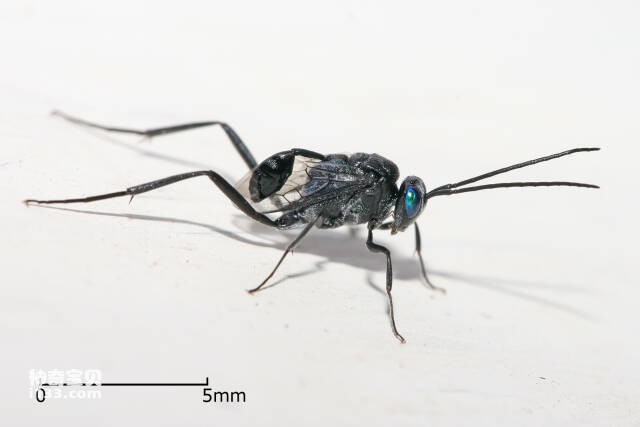
At the same time, parasitic wasps are also widely used in scientific research and medicine. Due to their short life cycle, large numbers, and ease of acquisition and reproduction, parasitoid wasps have become ideal model organisms for many researchers to conduct experiments and research. In short, although parasitic wasps may look scary, they play an important role in nature and have extensive application value in agricultural production, ecological balance, and scientific research.
9. Lacewing
The lacewing is an insect belonging to the family Cicadae, also known as the short treehopper. They usually live in meadows, fields and woods and are found around the world. Lacewings are relatively small, only about 1 to 2 centimeters in length. They feed on plant sap, especially herbaceous plants. Lacewings do not cause serious damage to crops, but in large numbers they can have a certain impact on fruit trees and other plants.
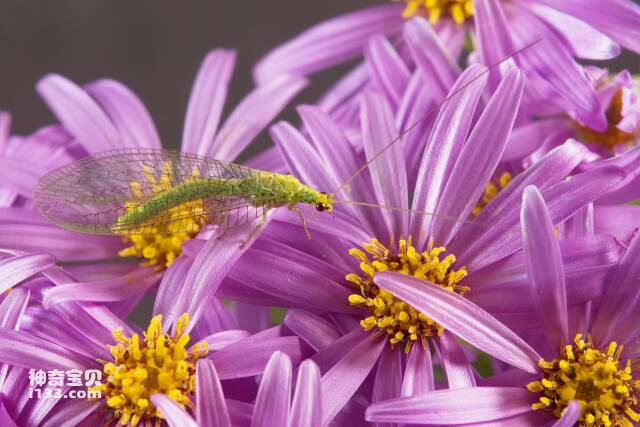
Lacewings begin chirping in the spring or summer, making a sound similar to a "clucking" sound produced by the male lacewing vibrating its chest muscles. The chirping of lacewings is of great significance in nature. They can use their chirping to attract the opposite sex, and at the same time, they can scare away natural enemies and play a role in self-protection. In conclusion, although they may not look very impressive, lacewings play an important role in nature and have certain significance to humans and other creatures.
10. Dragonfly
Dragonfly is a common insect belonging to the family Odonata of the order Diptera. Their bodies are slender and soft, often showing bright colors and transparent wings, which are very beautiful when flying in the sun. Dragonflies mainly feed on other insects, such as mosquitoes, flies, moths, etc., and are very useful in controlling pests in agriculture, horticulture, and forestry. At the same time, dragonflies often pollinate flowers when looking for food, and they also play an important role in the growth and reproduction of plants.
Dragonflies are excellent fliers, they can fly in the airFor several hours, it can fly upward, downward, forward, backward, etc. with ease. During its life, a dragonfly goes through four stages of development from egg to larva, pupa and then to adult. In conclusion, the dragonfly is a very magical and beautiful insect that not only plays an important role in the ecosystem, but is also one of the beautiful flyers that people love.

Protecting beneficial insects is an important measure to maintain ecological balance and improve the quality of agricultural production. Here are some ways to protect beneficial insects:
1. The use of toxic pesticides is prohibited. Toxic pesticides not only harm beneficial insects, they can also damage ecosystems and cause declines in the populations of other organisms. Therefore, the use of toxic pesticides should be reduced as much as possible, and non-polluting agricultural production methods such as biological control and physical control should be adopted.
2. Increase vegetation coverage. Vegetation can provide habitat and feeding places for beneficial insects, such as cultivating a certain area of flower fields, woods, grasslands, etc., to increase the habitat and feeding area of beneficial insects, which is conducive to the growth and reproduction of beneficial insects.
3. Maintain the ecological environment. Maintaining the ecological environment can promote the growth and reproduction of beneficial insects. For example, maintaining soil fertility, rational use of chemical fertilizers and pesticides, and reducing deforestation and overgrazing of forests and grasslands.
4. Grow a variety of plants. Different beneficial insects like to feed on different types of plants, so planting a variety of plants can increase the habitat and feeding places for beneficial insects, while also attracting more different types of beneficial insects.
5. Protect and propagate beneficial insects. Artificial protection and reproduction of certain beneficial insects is an effective method, such as bees, aphids, ants, etc. These beneficial insects can play an important role in controlling pests in agricultural production.
In short, protecting beneficial insects requires us to approach multiple aspects, establish sustainable agricultural production methods, and pay attention to ecological protection. Only when the ecological environment is good can the stability of the number of beneficial insects and the stability of the ecological balance be maintained.
animal tags:
We created this article in conjunction with AI technology, then made sure it was fact-checked and edited by a Animals Top editor.